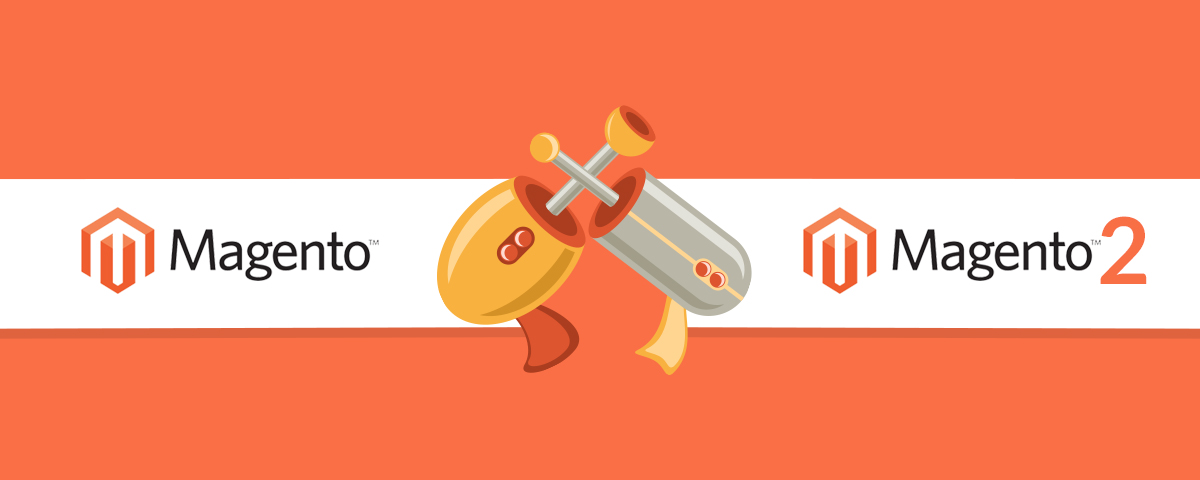Magento 1 vs Magento 2 – should I stay or should I go?

The Clash put it nicely: “If I go there will be trouble… and if I stay it will be double.” Do these lyrics hold true for merchants planning their move from 1.x to Magento 2?
What’s involved and how to make a good decision on when is the right time to plan a move? We bring you three most common questions merchants are asking. And answers, of course.
Magento 2 is finally out! Yes, you’ve all heard the news, it was all over the Magento ecosystem. I love the fact that Magento has finally shipped its new product, and this tweet from Alan Kent sort of sums up the excitement around it.
Is Magento 2.0 the most finely tuned piece of software ever published? Well, I’ll just leave this here and let myself out for a minute.
But jokes aside, Magento 2.0 is here, we’re looking forward to new challenges because, well, that’s how just about anyone has to roll these days.
As for the merchants, you know, those people that actually put bread on our table – what’s in it for them?
There’s in excess of 240,000 shops on Magento out there (or at least that’s the official figure), Magento 1.x that is. So, how should all these businesses approach this change?
The questions we’ve been getting lately can be summed up in:
When should I plan the upgrade to Magento 2?
How smooth or painful process can I expect?
Is it worth it?
So, let’s try to answer these basic questions:
When should I upgrade to Magento 2?
This depends highly on your current site and its current condition – bottom line is, if your site is performing well (running smoothly, orders are coming in…), and you’re using a version that’s not really outdated (I’d say anything before 1.8 CE and 1.13 EE would be considered quite outdated), there is no rush, but you can (and should) start exploring Magento 2, ask your solution partner to give you their thoughts and start doing some basic plans.
If you’re on an older version of the software or even on a newer version but having serious performance issues, and on top of that you have a number of 3rd party extensions installed, now would be a great time to plan for a revamp.
If you need to do something serious to significantly improve your store’s performance (and we can help you figure out the condition your site is in and why), you should definitely plan the new investments to be done on Magento 2.
The move – smooth or painful?
Let’s prepare for less-than-smooth here. Smooth is something you are not going to get – yes, there is a migration tool ready that should help you (and your solution partner) with the data (store setup, products, customers, orders, promo rules…) move between the platforms. We’ve also blogged about how to use it and what it enables you to do.
But, as it is clearly noted over there as well, theme and code customizations (which includes 3rd party extensions) will not be transferable, meaning they would need to be redone on Magento 2.
So, extra investments would need to be made in the visual and functional revamp. This should, in my book, be treated as a good thing because:
it can give you some new ideas and make you re-think your business as a whole
you will be able to get rid of some of the legacy code
you can improve overall usability of your site
Let’s face it – if you have 50+ extensions on your store (and this is even an understatement based on some of our recent experiences), Magento 2 can be a lifesaver as it will make you think, re-think and redo things, hopefully in a better way.
Is it worth it?
It will be. And the main reason is the change itself – for Magento there is no going back. Yes, they will be supporting the older versions for several years – and this is why you are in no need to jump the gun if you’re doing ok right now and you don’t have any plans to be a market leader or pioneer of sorts in your niche.
But you should also be aware that the majority of the investments and explorations of newest concepts around not just e- but any type of commerce out there (did anyone say omnichannel?) will be done on Magento 2, starting yesterday.
So if you are making active plans not to get left behind, even if you are staying put with Magento 1.x for the time being, consider these action items:
start thinking about what you’d like to improve on
make a list of extensions you are not actively using (or have no idea what they do)
open up the conversation with your solution partner about your (and their) plans for Magento 2
The next steps
For all you Magento store owners, 2016 will be the year to make some good decisions for your business.
Magento 2 brings a whole new playing field for merchants and solution partners alike, and while we’re trying to stay on top of our game (we got our Magento 2 Trained Solution Partner badge), you should too.
If you need any help with planning the next steps for your business, let us know.


